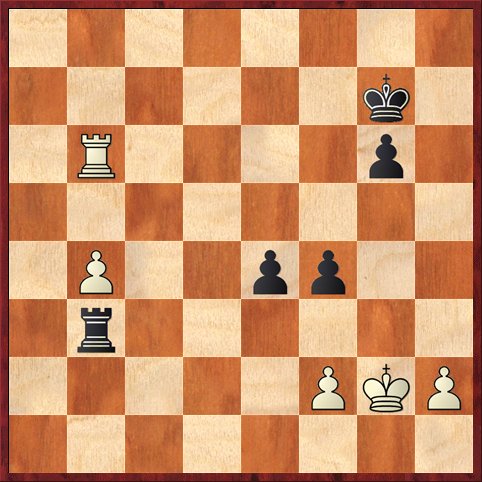I’m back online! And as I promised, I’d like to show you a position from my last game in the CalChess state championship, against Michael Lei Wang (a 14-year-old Class A player, not to be confused with Michael Wang the 12-year-old master, whom I beat earlier this year).
Before we start, I want to point out something really cool about playing in the Expert section of the state championship. Here were the matchups on the top five boards in the last round. By each player I’ve indicated their ranking in the U.S. for their age group.
- Teemu Virtanen (#30 Age 15) vs. Ladia Jirasek (#22 Age 14)
- Joshua Cao (#38 Age 16) vs. Pranav Nagarajan (#24 Age 14)
- Gabriel Bick (#30 Age 15) vs. Christopher Pan (#39 Age 13)
- Dana Mackenzie (#?? Age 55) vs. Michael Wang (#81 Age 14)
- Art Zhao (#28 Age 14) vs. William Li (#48 Age 13)
Do you notice one person that doesn’t quite fit? That would be me. I was the only player on the top five boards over 16 years old, and in fact I was older than any other three players combined. I was also the only one who is not currently on a USCF top-100 list.
This brings up an interesting question. Is it possible that I am in the top 100 55-year-olds in the country? I’ll bet somebody at the USCF could figure this out. Until then, my only claim to fame might be that I have one of the top 100 chess blogs. Maybe.
Anyway, I enjoyed playing in the midst of so much young talent, and hopefully I showed them that you can keep on playing chess even past your teens.
Now let’s go on to my game with Michael Wang. I’ll show you a position near the end that really isn’t difficult, but remember that endgames are not the strong point of young players.
 FEN: 8/6k1/1R4p1/8/1P2pp2/1r6/5PKP/8 b – – 0 47
FEN: 8/6k1/1R4p1/8/1P2pp2/1r6/5PKP/8 b – – 0 47
Position after 47. Kg2. Black to move.
Wang is playing White, and I’m playing Black. This was kind of an odd game. I wrote earlier about how I exchanged to victory in round two, but that was a deliberate choice. In this round the same thing happened, only it wasn’t my choice at all. My opponent got a somewhat superior position in the early middlegame, I thought, and then he just started trading pieces. In the process, his position went from better to okay to worse.
We finally ended up in a rook-and-pawn endgame that was much more dangerous for him than he realized. He had an outside passed pawn, and I had a pawn majority on the kingside. The key factors that I don’t think he fully appreciated were that my pawns were quite mobile and his king was stuck on the back rank.
The diagrammed position was the first point where I knew for sure I was winning. Do you see the finishing combination?
The first move is 47. … Rb2! Rooks like the seventh rank in general. In this case there is the added bonus that Black threatens the immediate 48. … e3, winning. White played 48. Kg1 to get out of the pin, and then I played 48. … f3, setting up a mating net. Again, his move is essentially forced: 49. h3, to create luft for the king. I chased his king with 49. … Rb1+ 50. Kh2. And finally I broke through with 50. … e3!, after which one pawn or the other is going to queen. He resigned a few moves later.
I liked this position because the books usually emphasize the outside passed pawn in R+P endgames, and they don’t usually talk about any winning possibilities for the side that doesn’t have the passed pawn.
Interestingly, I showed this position to the kids in the Aptos Library Chess Club the following day. I had expected that it would be extremely difficult for them. I was wrong!
It’s true that nobody came up with the first move, 47. … Rb2, because most of them do not understand or look for pins yet. But the next moves, 48. … f3 and 49. … Rb1+ and 50. … e3 and 51. … f2, they got without any prompting from me. I think, in retrospect, it was an easy plan for them to find because they normally charge forward with their pawns without stopping to think whether they can be captured. (For example, an opening idea I often see from them is to move all of their pawns to the fourth rank. When both players do this it leads to a comical position where all the pawns are hanging, but both players are usually oblivious to that fact.)
I think it’s ironic that the finishing combination was easier for a beginner to find than for an expert! (I think my move 50. … e3 was a total surprise to my opponent.) Sometimes it’s possible to know too much.



{ 1 comment… read it below or add one }
I was just curious if White has a better defense on move 48. It’s pretty clear that he has to lose a pawn. Maybe there is a better way to lose it. 48. Re5, Rb8, Kh3 and h4 all look like candidate moves. What does your chess engine say?